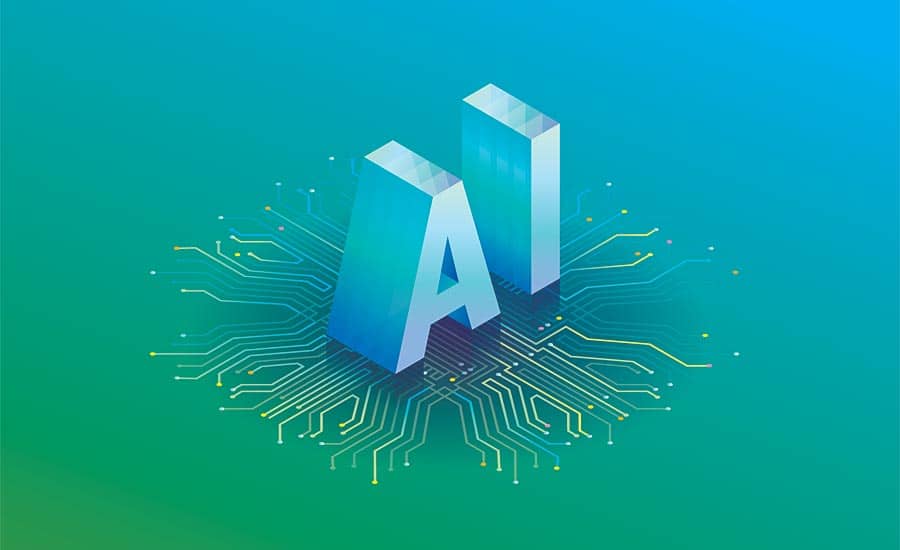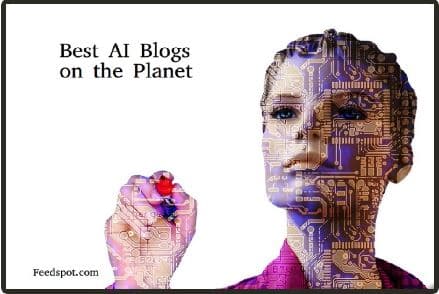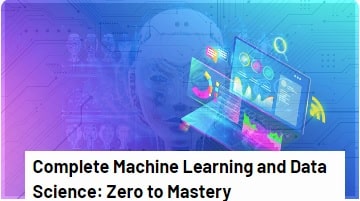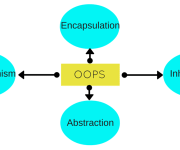Top 12 Artificial Intelligence Trends to watch In 2024
Artificial Intelligence is becoming an integral part of many organizations’ business plans. Already the journey of digital transformation has catapulted thanks to Machine Learning and Artificial Intelligence and because of the pandemic situation. The full scale of the impact that giving machines the ability to make decisions – and therefore enable decision-making to take place far more quickly and accurately than could ever be done by humans – is very difficult to conceive right now. But one thing we can be certain of is that in 2024 breakthroughs and new developments will continue to push the boundaries of what’s possible.
According to Sundar Pichai, the CEO of Google, AI will transform how we lead our lives and revamp many industries, including healthcare, education, and manufacturing.
AI Statistics – Key Findings
According to PwC’s Global Artificial Intelligence Study,
- $15.7tr Potential contribution to the global economy by 2030 from AI
- Up to 26% boost in GDP for local economies from AI by 2030
- 300 AI use cases identified and rated are captured in our AI Impact Index
Artificial intelligence (AI) can transform the productivity and GDP potential of the global economy. Strategic investment in different types of AI technology is needed to make that happen.
Labour productivity improvements will drive initial GDP gains as firms seek to “augment” the productivity of their labour force with AI technologies and to automate some tasks and roles.
Our research also shows that 45% of total economic gains by 2030 will come from product enhancements, stimulating consumer demand. This is because AI will drive greater product variety, with increased personalisation, attractiveness and affordability over time.
The greatest economic gains from AI will be in China (26% boost to GDP in 2030) and North America (14.5% boost), equivalent to a total of $10.7 trillion and accounting for almost 70% of the global economic impact.
Worldwide revenues for the artificial intelligence (AI) market, including software, hardware, and services, is forecast to grow 19.6% year over year in 2022 to $432.8 billion, according to the latest release of IDC Worldwide Semiannual Artificial Intelligence Tracker. The market is expected to break the $500 billion mark in 2023.
1. Augmented workforce
There have always been fears that machines or robots will replace human workers and maybe even make some roles redundant. However, as companies navigate the process of creating data and AI-literate cultures within their teams, we will increasingly find ourselves working with or alongside machines that use smart and cognitive functionality to boost our own abilities and skills. In some functions, such as marketing, we’re already used to using tools that help us determine which leads are worth pursuing and what value we can expect from potential customers.
In engineering roles, AI tools help us by providing predictive maintenance – letting us know ahead of time when machines will need servicing or repairing. In knowledge industries, such as law, we will increasingly use tools that help us sort through the ever-growing amount of data that’s available to find the nuggets of information that we need for a particular task. In just about every occupation, smart tools and services are emerging that can help us do our jobs more efficiently, and in 2023 more of us will find that they are a part of our everyday working lives.
2. Efficient language modeling
Language modeling is a process that allows machines to understand and communicate with us in language we understand – or even take natural human languages and turn them into computer code that can run programs and applications. We have recently seen the release of GPT-3 by OpenAI, the most advanced (and largest) language model ever created, consisting of around 175 billion “parameters”- variables and datapoints that machines can use to process language. OpenAI is known to be working on a successor, GPT-4, that will be even more powerful. Although details haven’t been confirmed, some estimate that it may contain up to 100 trillion parameters, making it 500 times larger than GPT-3, and in theory taking a big step closer to being able to create language and hold conversations that are indistinguishable from those of a human. It will also become much better at creating computer code.
3. Artificial Intelligence in Cybersecurity
Even though World Economic Forum has declared the criticality of cybercrimes, it doesn’t need rocket science to know that cybercrimes and cyber-attacks are on the rise. As we see more and more involvement of machines in every facet of our lives, there is a potential risk of cybercrime, and it continues to be a problem.
The logic is simple – more devices you add to your network, it creates a potential failure point those attackers can leverage to access your data and misuse it. Today, we also see that networks are getting complex day by day. This is where artificial intelligence can play a significant role. AI can identify patterns and around network traffic and highlight suspicious activities through smart algorithms. We can expect a considerable amount of AI development in the area of cybersecurity.
4. Metaverse & Artificial Intelligence
Metaverse is a terminology coined for an environment, a digital environment to be more specific, where multiple users can work and play together. It is a virtual world, just like the internet, but that delivers amazing experiences, and it is created by users for users.
There was a huge buzz in this space ever since Mark Zuckerberg spoke about creating one such where there will be a combination of virtual technology and his social media platform – Facebook. It is an unwritten statement that Artificial Intelligence will be a key component of the metaverse. It will allow users to create environments, which they can be part and will give them a homely feeling, subsequently enhancing their creative side. There will also be a scenario where humans will share these environments with AI machines for completing various tasks and activities within those environments.
5. Low/No code AI
One of the major challenges that organizations are facing today is the dearth of skilled AI engineers, who can develop the required tools and algorithms. With the advent of no-code or low code solutions, this challenge can be addressed by providing simple and intuitive interfaces, that can be used to create complex systems on Artificial Intelligence, theoretically.
If you look at some of the tools for web designing, they are no-code tools where users can just drag and drop the modules and features to the page and the website is ready. Similarly, no-code AI systems will help in creating smart applications by combining multiple pre-created modules and injecting specific data into them. NLP and Language Modelling are technologies that can be used for giving voice-based instructions to execute various tasks.
6. AI-driven vehicles
Another area where AI will play the brain of a system will be vehicles, such as cars, aircraft, and boats. This will allow respective AI companies to deliver exceptional travel experiences to consumers. Tesla is a classic example of AI-driven cars, which give a breath-taking driving experience. Moreover, it also ensures the prevention of accidents because the inbuild AI engine can foresee upcoming obstacles and prevent any kind of road accidents. On average 1.3 million people die of road accidents every year. So, if we look at these alarming statistics, then AI does have a critical role to play to stop this from happening.
Tesla confirms that its cars will have the self-driving capability, which will be available by 2022. However, there is a minuscule possibility of it being commercially available in the market in 2022. We are also anticipating the usage of AI in ships with the coming up of Mayflower Autonomous Ship (MAS), which has an artificial intelligence component of IBM. AI in creativity
7. Creative AI
All of us are well aware of the usage of artificial intelligence to create music, poetry, and even video games. We are expected to see models such as GPT-4 and Google’s Brain that will completely revolutionize the concept of AI in creativity and redefine new boundaries, to help us know about possibilities. We shall also see the implementation of artificial intelligence in day-to-day tasks such as creating headlines for articles and newsletters, creating logos and infographics. Though creativity is a human skill, we are seeing more possibilities of machines doing these tasks.
While we are aware of what AI is capable of and how people can harness the possibilities that artificial intelligence brings to the table, there is always a question on whether there is any area or task where AI is not required. Not sure that is something that we can think of at this juncture because every step of our life, we see AI being a very pertinent component.
Generative AI, which is artificial intelligence that can create text, images, videos etc. without supervision, set the tone for this year and the trend will spill on to 2023 as well. It started with the release of DALL.E 2 by AI research firm OpenAI back in July this year, the same company that created the GPT models. A successor to DALL.E, which was released in 2021, DALL.E 2 allows image generation using text prompts.
What followed was a barrage of similar, more advanced tools for text to ‘anything’ (image, video, speech, etc.). The most prominent examples of this include Midjourney, Stable Diffusion, and Google’s Imagen, which allow users to create art by simply describing things through text. So much so that an AI-generated artwork submitted by Jason Allen to the Colorado State Fair’s fine arts competition ended up winning the first spot in August, sparking both controversy and excitement about the future of art.
The launch of ChatGPT and GPT 3.5 (Generative Progressive Transformer-3.5) — which many claim will herald a new era in dialogue-based conversational AI — has ended the year on a high for conversational AI. People are using ChatGPT for tasks ranging from correcting code errors to rewriting the Bohemian Rhapsody and the number of ChatGPT users surpassed the million mark in less than a week last month.
Large companies like Adobe and stock image supplier Shutterstock are also starting to take notice. In October, Adobe announced that it will introduce more generative AI assistance in its app. Shutterstock, on the other hand, announced a partnership with OpenAI in October that will allow integration of DALL.E with the former’s content for its users worldwide. OpenAI’s major partner – Microsoft – has also been leveraging tools like GPT-3 for its Office suite of tools.
8. AI benchmarks
Standards for setting benchmarks for accuracy are changing fast. Benchmarks that were relevant just a few years back are now out of date. This is particularly true when we speak of emerging technologies like large language models and generative AI.
Work is on to deal with this specific problem. For example, a team from Stanford University recently unveiled Holistic Evaluation of Language Models (HELM), a new benchmarking approach that would serve “as a map for the world of language models.” Organisations like DeepMind and NVIDIA have also developed a few use case-specific and relevant benchmarks and evaluation standards. This trend is expected to continue in 2023 as well.
9. AI ethics
There is no unanimously accepted definition as yet but broadly put, AI Ethics, also called AI value platform, refers to a broad collection of considerations for responsible AI, which makes a combination of three crucial factors: safety, security, human concerns, and environmental considerations in AI models. AI ethics is a system of moral principles and techniques that are intended to develop the responsible use of AI. Its core components include avoiding AI bias, AI and privacy, avoiding AI mistakes, and managing AI environmental impact.
10. AI governance
Forrester’s report on predictions for 2023, released in October, stated that with the rising demand for trust in AI, one in four CIOs and CTOs would lead AI governance practices for their organisations. The report also said that AI governance’s scope will widen to include topics like cybersecurity and compliance.
While AI has been developing at a neck-breaking speed, the governance and regulation aspects have failed to keep pace. However, in light of growing awareness among the public and authorities tightening their noose, companies are slowly waking up to implement better practices.
The US government, for instance, blueprint for the AI bill of rights for regulating this technology and its applications. The EU, which already implements GDPR, also unveiled the AI Liability Directive bill to prevent companies from deploying harmful models and systems, this year. Further, the policy think tank of the government of India – NITI Aayog – released a discussion paper titled ‘Responsible AI for All’ where it suggested organisations deploying AI systems, to constitute internal committees for assessing the ethical implications of the decisions made by these models.
11. Large Language Models (LLM)
Large Language Models are founded on the principles of machine learning wherein algorithms recognize, predict, and generate human languages based on very large text-based data sets. The models include Statistical Language Models, Neural Language Models, Speech Recognition, Machine Translation, Sentiment Analysis, and Text Suggestions. These models are to transform science and society in league with AI. This AI prediction claimed that future AI models won’t merely reflect the data, they will reflect our chosen values.
12. Digital avatars
A digital avatar is one of the current and potentially artificial intelligence trends as a visual form or an image that is constructed to represent a person in the virtual world. The AI prediction speculates that advanced technologies such as artificial intelligence and augmented reality ensure that avatar bodies are developed to match human beings, which are then mind-linked to these avatars for remote control operation. Driven primarily by AI models, an avatar can be described as a digital representation of a person with intelligence, which offers human-like interaction by simulating the way our brain handles conversation.
13. Quantum ML
Greater artificial intelligence and machine learning models could be developed with the help of quantum computing. In spite of the fact that quantum computing is still impractically far away, things are beginning to change thanks to Microsoft, Amazon, and IBM’s cloud-based quantum computing tools and simulators.
14. Machine learning with Automation (AutoML)
Two promising parts of automated machine learning will include enhanced tools for labelling data and the automatic tweaking of neural net structures. Artificial Intelligence (AI) will decrease in price and time to market for new solutions when the process of selecting and refining a neural network model is automated. According to Gartner, the future of operationalizing these models will centre on refining the PlatformOps, MLOps, and DataOps processes. Collectively, these advanced features are known as XOps by Gartner.
15. Hyperautomation
The term “hyperautomation” refers to the expansion of traditional business process automation beyond the scope of particular processes. Hyperautomation is the automation of automation, the dynamic discovery of business processes and the creation of bots to automate them, made possible by the combination of artificial intelligence (AI) tools with robotic process automation (RPA).
(Updated on 6 Dec 2022)


























